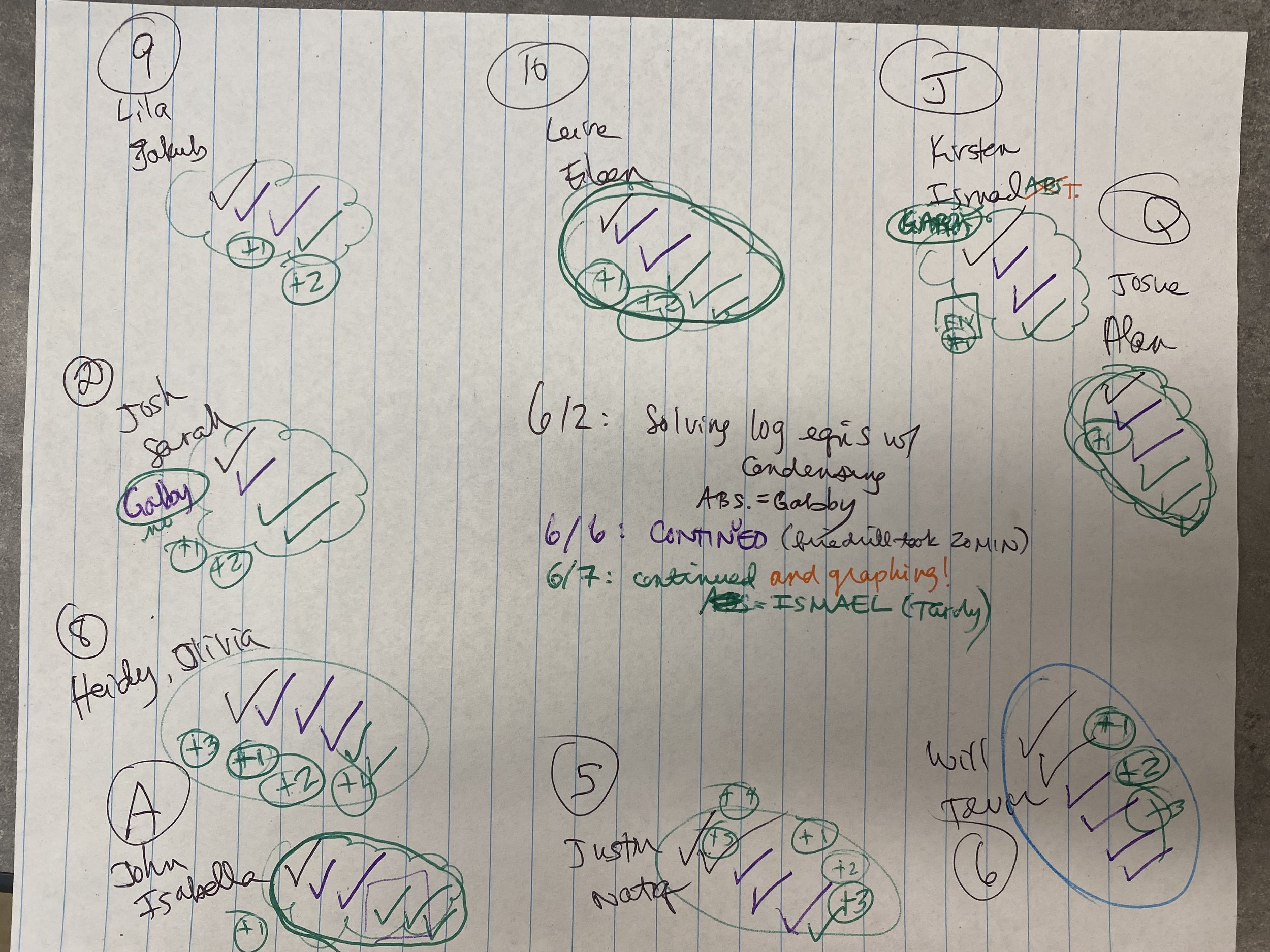How ‘BTC’ Looked in my Classroom ‘22-’23
Well, my first year of trying out BTC (‘Building Thinking Classrooms’ as described by Peter Liljedahl) has come to an end, and overall I really enjoyed implementing this new teaching method! My students liked it as well and often asked if they were able to go to the boards that day. I did NOT follow Peter’s exact BTC model. I have not mastered the Standards-Based Assessment at all (this is my goal for next year). I did not send students to the board every day. I created videos for students to watch about four times per month. These videos gave them notes and basic examples for new topics, so my students did not truly discover new concepts from scratch at the boards. HOWEVER, I found a variation of it that I like and that overall worked well.
Here is what I did:
On “board days,” students get a random playing card to send them to boards. Each board station has a large, laminated playing card to identify the different areas. I put students in pairs rather than in groups of three. This ensures all students are engaged and working; no one can slack off or zone out.
During board days, I needed a way to make sure that students were continually working and thinking rather than waiting for me to check their work so they could move to the next problem. I had to help students adjust to the following idea - my role in a BTC is NOT to individually explain things and reteach to each pair one at a time. This would slow me down way to much and would keep other pairs waiting. My role is to continually walk in a circle around the room scanning work, making sure pairs aren’t too far off in their thinking, provide open-ended suggestions if needed, and check work to moves pairs along. This REALLY helps to not only keep everyone thinking and moving, but it also facilitates the “transfer of knowledge” that Peter refers to, since students are forced to work together and ask each other questions (now that I am not just the “provider of correct answers”).
To keep students moving along through the thin-slicing tasks, I line up slips of problems (ideally, a different color of paper for each problem) on the back desk where no one sits. Everyone starts with the first problem, and once I check a pair’s problem and it is correct, one of them goes to the back desk, returns their old problem and gets a new problem.
I realized quickly that if a weaker student is paired with a stronger student, the stronger student tends to take the lead and the marker and rush through the problems. In order to prevent this, if I get to a pair that is “ready to move on” (and I suspect one person did all the thinking and work), I ask the weaker student to explain what they did. If that student cannot, I ask the pair to discuss their solution method and strategy again and I tell them I will check on them again after another revolution of the room. Students do NOT like when I do this, so it is a good deterrent and encourages them to truly work together.
To keep track of what each pair of students gets through each class, I use the system below. I need to make a Word Doc template of this to use each board day, but for now, I quickly mark down the station playing card names, the students’ names, who was absent, the date and what we did that particular day, and checks for each problem each pair completes. It looks pretty chaotic on some days!
Some students are marker-hogs, and some avoid the marker. During the first couple months of the school year, I would call out “pass the marker” every three minutes to get them used to sharing the writing. As the year went along, I would call out a reminder about three times per class, something like, “Make sure you keep that marker moving! Everyone is responsible for knowing that is going on!” If I notice a lot of a certain student’s writing on the board, I take the marker from that student, hand it to their partner, and ask them to not take it back for a while.
Classwork is 25% of students’ grade (all kinds of classwork, not just board work). Each ‘board day,’ students get a classwork grade out of 5 points. At the beginning of each ‘board day class’, I tell students how many problems they should try to get through in pairs. HOWEVER, if a pair does not quite get that many done, I do not necessarily penalize them. I do NOT want students just rushing mindlessly through the problems to try to get every possible point. Let’s say I ask them to aim for four problems that period. If I see a pair really cooperating, helping each other, reteaching themselves, and sharing the workload, they will always get full credit. If a pair is moving much slower than I know they were capable of, generally wasting time, they will lose points based on how many out of four they did not complete. If a particular student is being disruptive, uncooperative, or otherwise disrupting the classroom’s flow, they lose a classwork point each time I have to get them back on track.
My method has room for improvement, but this is where I am at right now after a full year, and I am excited for what is to come next year and I improve more!
Sidenote - BTC is MUCH more work than a traditional class where a teacher sits at the desk while students work. Wear comfortable, quiet (non-clicking) shoes and comfortable clothes!



